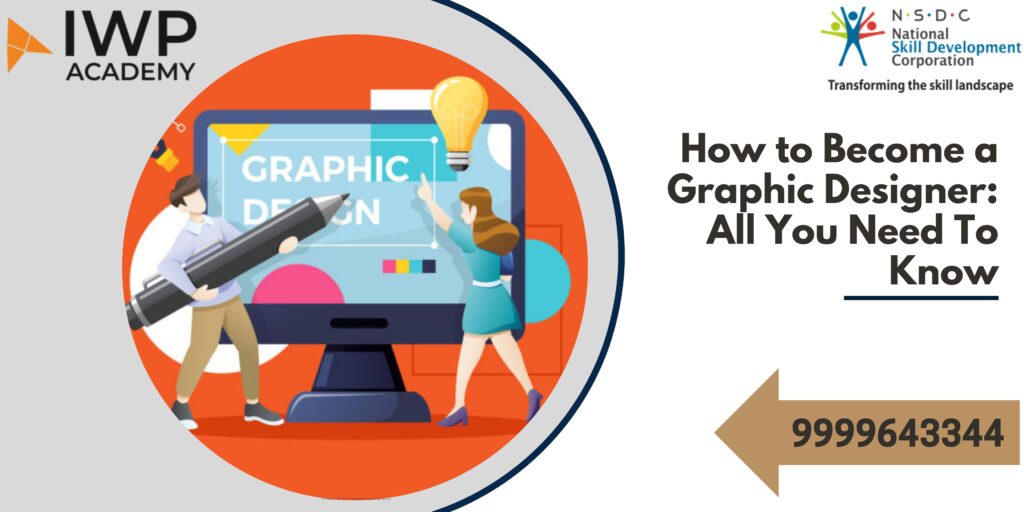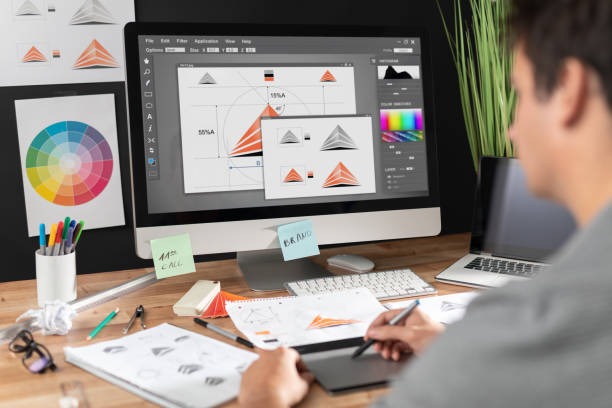Graphic design is a dynamic and creative field that plays a crucial role in today’s visually-driven world. From designing logos and websites to creating stunning marketing materials and advertisements, graphic designers are the visual storytellers of our digital age. If you have a passion for creativity, a keen eye for aesthetics, and the desire to turn your artistic talents into a rewarding career, then becoming a graphic designer might be the perfect path for you. In this comprehensive guide, we’ll walk you through all you need to know to embark on your journey to becoming a graphic designer.

Chapter 1: Understanding Graphic Design
Before diving headfirst into the world of graphic design, it’s essential to understand what it entails. Graphic design is the art of combining visuals and text to communicate a message effectively. It’s used in various mediums, including print, digital, and multimedia. Graphic designers work with color, typography, imagery, and layout to create visually appealing and communicative designs.
Chapter 2: Develop Your Creative Skills
Graphic design is an art form, and like any art, it requires creativity. Here’s how you can nurture and develop your creative skills:
- Learn the fundamentals: Study the principles of design, including balance, contrast, alignment, and proximity. Understanding these basics is crucial for creating visually appealing compositions.
- Practice, practice, practice: Create your designs regularly. Experiment with different styles, techniques, and tools to hone your skills.
- Seek inspiration: Follow design blogs, visit art galleries, and study the work of established graphic designers to draw inspiration and learn from their experiences.
Chapter 3: Acquire the Necessary Education and Training
While not all graphic designers have formal education, it can be highly beneficial. Consider the following options:
- Bachelor’s degree: Many employers prefer candidates with a degree in graphic design or a related field. These programs provide comprehensive training and opportunities for building a portfolio.
- Online courses: There are numerous online courses and tutorials available that cover graphic design software, principles, and techniques. Platforms like Coursera, Udemy, and Skillshare offer a wealth of resources.
- Community college or vocational school: These institutions often offer affordable graphic design programs that can help you develop your skills.
Chapter 4: Master Graphic Design Tools
Graphic designers use various software tools to create their designs. Here are some essential ones to learn:
- Adobe Creative Cloud: Adobe Illustrator, Photoshop, and InDesign are industry-standard software for vector graphics, image editing, and layout design.
- CorelDRAW: Another popular vector graphics editor that is widely used in the industry.
- Sketch: A vector graphics editor for macOS that is favored by many UI and UX designers.
- Figma: A collaborative interface design tool, ideal for web and app design projects.
- Canva: A user-friendly, web-based tool suitable for beginners and small design projects.
Chapter 5: Build a Portfolio
A strong portfolio is your ticket to landing clients or securing a job in graphic design. It showcases your skills and creativity. Here’s how to create an impressive portfolio:
- Select your best work: Curate a selection of your finest designs that demonstrate your versatility and creativity.
- Present your work professionally: Ensure your portfolio is well-organized and easy to navigate. Include descriptions for each project, explaining your design choices and goals.
- Update your portfolio regularly: As you create new work, update your portfolio to reflect your growth and skills.
Chapter 6: Gain Experience
Building a career in graphic design often requires gaining experience. Consider the following ways to get started:
- Internships: Apply for internships with design agencies, studios, or companies to gain real-world experience and make valuable industry connections.
- Freelancing: Start freelancing to build your client base and portfolio. Freelancing allows you to work on a variety of projects and gain exposure.
- Networking: Attend industry events, join design associations, and connect with other designers to expand your professional network.
Chapter 7: Job Search and Career Path
Once you’ve developed your skills and gained experience, it’s time to embark on your graphic design career. Job opportunities include working for design agencies, in-house design teams, or as a freelancer. Explore various job roles, such as:
- Graphic Designer: Creating visual content for print and digital media.
- Web Designer: Specializing in designing websites and user interfaces.
- UI/UX Designer: Focusing on user experience and interface design for digital products.
- Art Director: Overseeing the visual style of projects and leading design teams.
Conclusion
Becoming a graphic designer is a journey that requires dedication, creativity, and continuous learning. By understanding the field, developing your skills, and building a strong portfolio, you can embark on a rewarding career in graphic design. Remember, the key to success in this dynamic field is a passion for design and a commitment to staying current with industry trends and technologies. With the right mindset and the right tools, you can turn your love for design into a thriving career.




